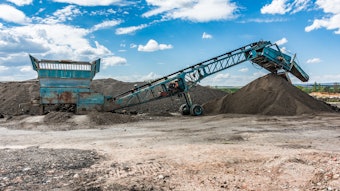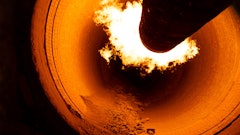Earth Advantage Institute, a green building certification resource and educational organization that has certified more than 11,000 homes, has taken a look forward at green building expectations for the next decade.
"Since 2000, despite two wars and a serious economic slowdown, the United States has made significant progress in sustainable construction," said Sean Penrith, executive director, Earth Advantage Institute. "We've come from a point where the perception of green building involved remote off-the-grid homes to a point where the National Association of Homebuilders now has a green building standard in place and the federal government has invested $4 billion of its stimulus money in energy efficiency for its buildings nationwide. The next 10 years will accelerate these trends."
Based on trends tracked over the past 5 years, Earth Advantage Institute staff has compiled a list of 8 predictions that provide an Earth Day glimpse of American homes and the home industry over the next decade.
Newly built homes will use one third the energy that they do today. Progressive builders are already going far beyond the current standards to build "net-zero" homes that produce at least as much energy as they consume over one year. The techniques used in building these high performance homes will filter down to the mainstream rapidly as homebuyers see how easy it is to create energy efficient and even furnace-free homes using readily available materials and emerging technology. These super-insulated "passive homes" were featured on the "Oprah Winfrey Show" on Earth Day, April 22.
Buying decisions will be based on better information about the "life cycle" impact of products. New studies are underway on the total environmental cost of building materials, from raw materials collection to manufacture, installation and eventual disposal or recycling. Homebuyers will also see data on durability and maintenance of those materials. Earth Advantage Institute recently completed a lifecycle analysis of residential building materials and practices for the state of Oregon's Department of Environmental Quality.
The rising cost of clean water will drive most people to stop using it to water lawns and flush toilets. Many homes will use graywater (domestic wastewater from any source except toilet and garbage) and rainwater for these purposes. Many states, including Texas and the Southwestern and West Coast states, have passed legislation authorizing the use of graywater by households for yard irrigation. Arizona, for example, allows up to 400 gallons per day of graywater use on lawns and gardens.
Lenders will demand energy efficient buildings because they are more stable investments. Sustainable homes are built durably to protect the homes from moisture, excessive heat and cold, and airborne toxins -- all of which can cause unhealthy conditions for occupants or decomposition of building materials. Equally important, efficient homes cost less to operate, so occupants have more cash available to pay rents and mortgages.
Communities will become denser, making better use of pedestrian walkways, bicycle paths and mass transit. The 2010 New Partners for Smart Growth conference documented the growing preference among today's young people and today's older citizens to live in denser, more convenient urban environments offering easy access to cultural activities, dining, entertainment and green space.
In the future, not just buildings will be certified, but neighborhoods and entire cities will be certified. This verification work will not only cover eco-friendly structures and materials, but will ensure that unique bio-regional conditions, water conservation, green space preservation, access to public transportation, and ongoing resident sustainability education are addressed.
All buildings will have baseline energy scores based on home design and the physical properties of the house. Home owners will have a better idea of where they stand with regard to energy efficiency and will understand how to upgrade their homes cost-effectively. Buyers will know more about energy performance when they shop for a home. The U.S. Department of Energy and the Environmental Protection Agency will create a voluntary national energy scoring system for homes by October of this year.
All homeowners will know significantly more about their energy and water use and their energy habits. The use of stand-alone or online home energy displays will enable them to monitor consumption in real time. Consumers will know how many times they opened their refrigerator door, when the hairdryer was used, how many gallons of water their teenager used during their shower, and the approximate dollar cost of each activity.
About Earth Advantage
Earth Advantage Institute works with the building and design industry to implement sustainable building practices. Its nonprofit mission is to create an immediate, practical and cost-effective path to sustainability and carbon reduction in the built environment. The organization achieves its objectives through a range of innovative certification, education and technical services programs. More information is available at www.earthadvantage.org.

![Img 1707[56]](https://img.forconstructionpros.com/files/base/acbm/fcp/image/2023/04/IMG_1707_56_.6437076c97961.png?auto=format%2Ccompress&fit=crop&h=191&q=70&rect=0%2C462%2C1920%2C1080&w=340)












![Glp Porsche 072723 465 64ee42287c29e[1]](https://img.forconstructionpros.com/files/base/acbm/fcp/image/2024/03/GLP_PORSCHE_072723_465.64ee42287c29e_1_.65e88b8589b9c.png?auto=format%2Ccompress&fit=crop&h=135&q=70&rect=0%2C520%2C2250%2C1266&w=240)











